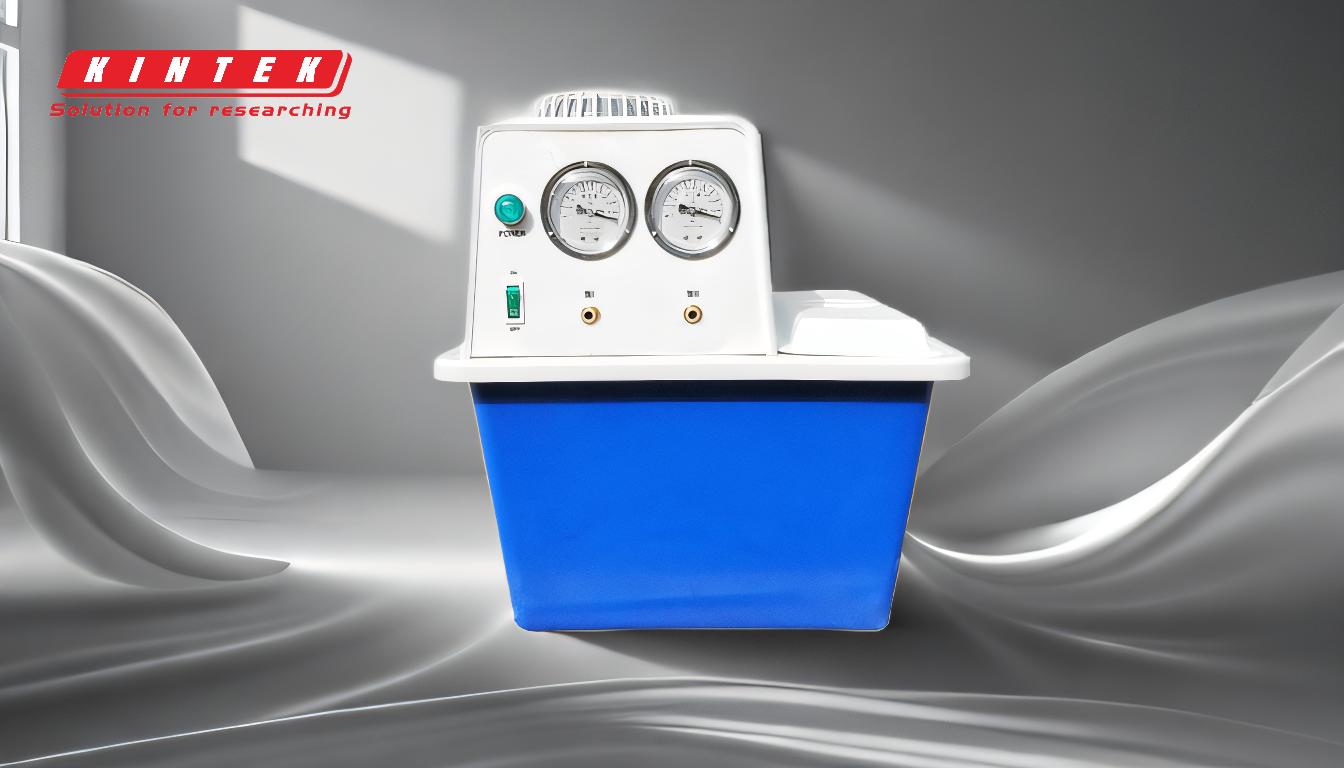A vacuum pump is essential in processes like rotary evaporation because it significantly lowers the boiling point of solvents, enabling faster and more efficient evaporation. By reducing the pressure inside the evaporator system, the vacuum pump facilitates the evaporation of solvents at lower temperatures, which is crucial for heat-sensitive materials. Additionally, the vacuum pump aids in the condensation process by increasing air pressure in the condenser, ensuring efficient trapping and re-liquefaction of vaporized gases. Proper connection and isolation of the vacuum pump via a vacuum manifold further enhance the system's functionality and control.
Key Points Explained:

-
Lowering the Boiling Point of Solvents:
- A vacuum pump reduces the pressure inside the evaporator system, which in turn lowers the boiling point of the solvent. This allows the solvent to evaporate at a much lower temperature than it would under normal atmospheric pressure.
- This is particularly beneficial for heat-sensitive materials that could degrade or react undesirably at higher temperatures. By enabling evaporation at lower temperatures, the vacuum pump helps preserve the integrity of these materials.
-
Faster Evaporation:
- The reduction in pressure not only lowers the boiling point but also accelerates the evaporation process. This means that solvents can be removed more quickly, which is advantageous in laboratory settings where time efficiency is crucial.
- Faster evaporation leads to quicker turnaround times for experiments and processes, enhancing overall productivity.
-
Enhanced Condensation Efficiency:
- The vacuum pump is applied to the condenser to increase air pressure, which slows down the movement of the gas. This deceleration is critical for the efficient trapping and re-liquefaction of the vaporized gas.
- Efficient condensation ensures that the solvent is effectively recovered, which is important for both economic and environmental reasons. It minimizes solvent loss and reduces the need for additional solvent purchases.
-
System Control and Isolation:
- The vacuum pump should be connected to one of the 4 ports on the supplied vacuum manifold. This setup allows for the isolation of each component of the short path while providing an extra valve for atmospheric control.
- Proper isolation and control are essential for maintaining the desired pressure levels and ensuring the smooth operation of the evaporator system. It also allows for easier maintenance and troubleshooting of individual components.
-
Versatility and Application:
- Vacuum pumps are versatile tools used in various applications beyond rotary evaporation, including filtration, degassing, and distillation. Their ability to manipulate pressure makes them indispensable in many scientific and industrial processes.
- Understanding the specific requirements of your application will help in selecting the appropriate vacuum pump and configuring it correctly for optimal performance.
In summary, a vacuum pump is not just a useful accessory but a necessary component in many laboratory and industrial processes. Its ability to lower boiling points, speed up evaporation, enhance condensation efficiency, and provide precise system control makes it an invaluable tool for anyone working with solvents and heat-sensitive materials.
Summary Table:
| Key Benefit | Description |
|---|---|
| Lower Boiling Points | Reduces pressure to evaporate solvents at lower temperatures, ideal for sensitive materials. |
| Faster Evaporation | Accelerates solvent removal, improving time efficiency in lab processes. |
| Enhanced Condensation | Increases air pressure for efficient trapping and re-liquefaction of vaporized gases. |
| System Control & Isolation | Connects via vacuum manifold for precise pressure control and component isolation. |
| Versatility | Used in filtration, degassing, and distillation for diverse applications. |
Maximize your lab's efficiency with the right vacuum pump—contact us today for expert guidance!










